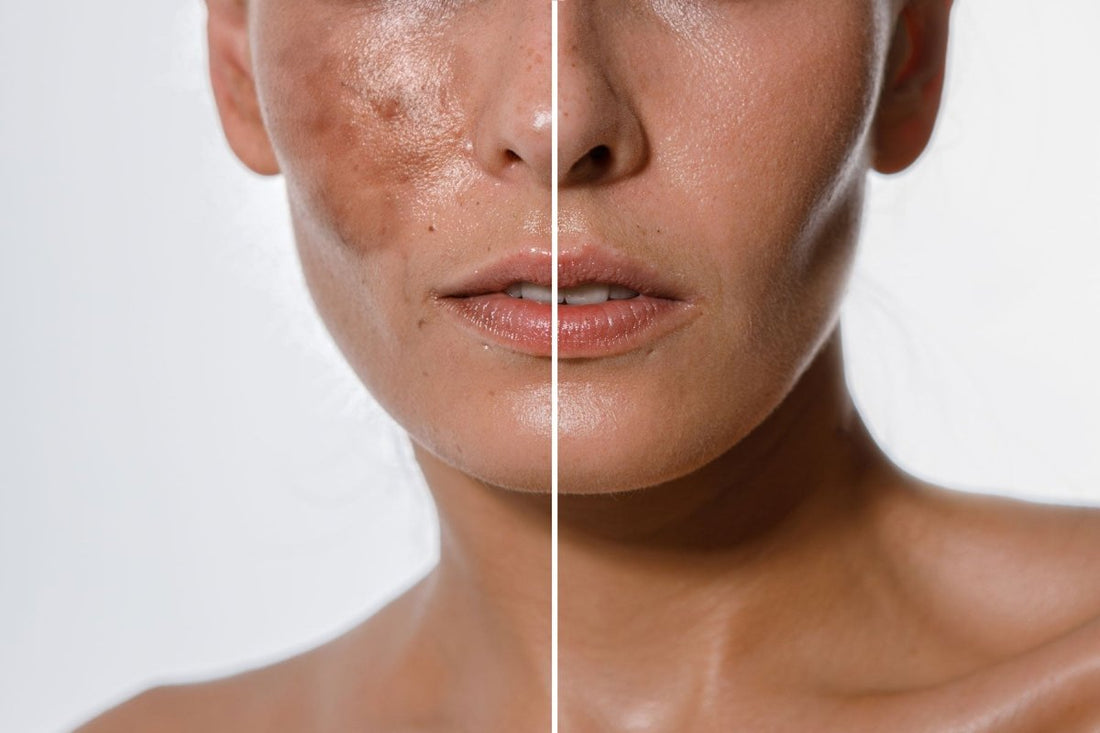Ask Dr. Day: What Can I Do About Melasma?
Q: Dr. Day, I’ve developed patchy brown discoloration on my face, especially on my cheeks and upper lip. I never had this before—what is it, and how do I treat it?
Melasma is a chronic skin condition that affects millions of people, mostly women, and it often shows up during the reproductive years. You’re not imagining it—it can seem to appear out of nowhere, and it can be surprisingly difficult to treat. I see this in my practice all the time. What makes melasma especially challenging is that it’s influenced by a combination of factors, including hormones, sun exposure, and heat. It commonly shows up as brown or grayish-brown patches on the cheeks, bridge of the nose, forehead, chin, and upper lip. It can also appear on the neck and forearms—all are areas that often get a lot of sun. Understanding what’s triggering your melasma is key to getting it under control, and fortunately, we have new treatment options that are making a real difference.
Q: Why does melasma happen?
There isn’t just one cause. Melasma is the result of a combination of hormonal, environmental, and genetic factors that together lead to increased pigment production. Here are the most common triggers I discuss with my patients:
Sun exposure: This is one of the biggest culprits. UV rays activate melanocytes—the pigment-producing cells in the skin. Even five minutes of unprotected exposure on a cloudy day can trigger or worsen melasma.
Hormonal shifts: Pregnancy, oral contraceptives, menopause, or any hormonal fluctuation can bring on melasma. It can even take several years after starting hormonal birth control for melasma to show up. This is why it’s often referred to as the “mask of pregnancy.”
Genetics: If your family members have melasma, you’re more likely to develop it too.
Medications and skincare products: Certain medications, such as anticonvulsants, and some cosmetics can increase your skin’s sensitivity to the sun, making melasma worse.
Heat: This surprises many people. Heat alone, even without UV exposure, can activate pigment cells. That includes saunas, hot yoga, and even intense summer heat.
Q: How is melasma different from other types of pigmentation?
This is something I talk about often, especially since not all dark spots are the same—and they don’t all respond to the same treatments. Here are a few conditions that can be confused with melasma, but have different underlying causes:
Post-inflammatory hyperpigmentation (PIH) happens after a skin injury or inflammation—like acne or eczema. PIH can occur anywhere on the body and usually appears as flat, tan to dark brown spots.
Solar lentigines, or “sun spots,” develop over time from cumulative sun exposure. These are more common as we age and show up on areas like the face, hands, and shoulders. Melasma, by contrast, is typically hormonally driven and shows up in specific patterns on the face. It’s often more resistant to treatment and requires a more tailored, gentle, and consistent approach.
Q: Can melasma be prevented?
Prevention is key—and it starts with excellent sun protection and avoiding known triggers. Here’s what I recommend:
- Use a broad-spectrum sunscreen daily, with an SPF of 30 or higher—rain or shine. Reapply every two hours if you’re outdoors.
- Wear protective clothing, including a wide-brimmed hat and sunglasses.
- Stay in the shade, especially between 10 a.m. and 4 p.m., when UV rays are strongest.
- Avoid tanning beds, which can be just as damaging as direct sun.
- Limit heat exposure, including steam rooms, saunas, and high-heat fitness classes like hot yoga.

Q: What are the treatment options?
Melasma is a chronic condition, so while we may not be able to cure it, we can absolutely help manage it. The key is consistency and choosing the right treatments for your skin. Here are some of the most effective options we use in my practice:
Topical medications such as tranexamic acid, retinols, cysteamine, niacinamide, and vitamin C, often in combination formulas. These are best used under the guidance of a dermatologist.
Chemical peels with glycolic acid, trichloroacetic acid, or other specific exfoliants help by gently removing the outer layers of skin and encouraging fresh, even-toned skin to surface.
Laser and light therapies can be effective when used appropriately. Since heat can worsen melasma, these treatments must be done carefully. I always use specific, personalized skincare immediately afterward to optimize results and minimize downtime.
Microneedling helps create micro-channels in the skin that enhance absorption of brightening treatments and also stimulates collagen. Again, personalized post-care is essential to achieve the best results.
Oral medications like tranexamic acid may also be an option in certain cases.
Bottom Line: Melasma is one of the most challenging pigment conditions I treat, but the right approach makes all the difference. With a combination of sun protection, lifestyle adjustments, and customized treatment, it is possible to dramatically improve your skin tone and keep melasma under control. If you’re struggling with melasma, know that you’re not alone—and that there are options that work. Let’s find the one that’s right for you.



![[The Science ] of Longevity: A Skin Focused Approach](http://dorisdaymd.com/cdn/shop/articles/Longevity3-9658695.jpg?v=1765451344)
![[Q&A Session] How Can I Regain Lost Collagen?](http://dorisdaymd.com/cdn/shop/articles/blog_collagen-129369-9354398_e967da1d-cb0e-4086-8c0d-714e0114968f-6680265.jpg?v=1763048229)
